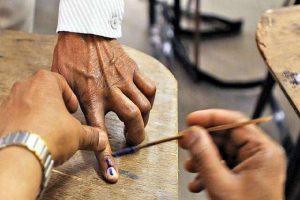Classroom teaching is a performance and many teachers choose this profession because it gives them a sense of participation in the learning process. Physical proximity and face-to-face interactions can bring out the best in students.
Engaging all the students and encouraging them to be active online becomes a Herculean task. The adrenaline rush that is felt in the class when there is something awkward, the sudden laughter, the body language and voice inflexion, the mimicry, and the instant feedback including yawning and the backbenchers’ bantering ~ all are found missing in the virtual classroom. Since most digital teaching is done through words, it is expected that the lessons should be exciting enough to kindle the imagination of learners.
So, the real challenge is how to bring one’s personality into the digital classroom. Instead of keeping ahead in their academic field, teachers are expected to master newer technologies every now and again. Programming the curriculum for digital universities will be one of the biggest challenges. Interactive media courseware development is a tedious operation. A true quality educational product would require synergy between faculty experts, programmers, and digital artists.
The think tank must realise that a foolproof curriculum requires an institutional investment in faculty expertise to programme in this novel content medium. If students at a digital university have to go through a separate curriculum from the on-campus students, there may not be a sufficient baseline from which to determine the grades of the virtual pupils.
While designing an electronic curriculum for distance learners, it is important to build a reliable testing infrastructure. If this is done, the distribution of grades between the virtual students and on-campus learners may be identical. Also, proper market research may be done to identify the target learners ~ whether it is the lifelong learners who desire to learn that will dominate over the ones who seek to obtain real university credits in order to decrease time to a degree once he enters the university.
This makes it difficult to directly respond to individual learners’ needs for a curriculum. It must be agreed that the quality of a degree depends on the depth and scope of the one-on-one mentoring relationship with individual faculty members. To make possible the interactive aspect of the mentoring process would require an enormous investment of faculty time.
Few teachers would be there to commit to a teaching endeavour that requires spending as much time. So, it is desirable that electronic courseware and credit granting must be cost-effective. It may be argued that reduced cost per credit hour will be the prime incentive for students to go in for digital university courses. Virtual students would like to buy the cheapest educational products in the market where education has become a commodity.
If a purely commodified market model is to be applied in the case of digital universities, then the scholarship is sure to be sacrificed especially when the budget for the education sector keeps getting reduced. When establishing a digital university, the challenge would be the pedagogical approach. In order to manage the students in virtual mode, the teachers have to develop engaging pedagogical techniques that appear in the virtual class, giving them an opportunity to engage themselves in the running of the class.
Considering the value of practicum in evolving the skill of the learners, it becomes important to develop a practicum plan for digital learners which is equally engaging. The assessment schedules have to be exhaustive and need to navigate each aspect of the coursework. Only then will the pedagogy make sense. Since learners’ growth must be evaluated holistically and in terms of the social value they create in society, the responsibility lies in pedagogy and evaluation schemes.
Along with the learning of the coursework, the faculties will also have to work on the possibilities of the learners’ coming together in the teaching-learning process and also creating human values. The aim of a digital university is to promote online course delivery through the use of computer networking. It can be said to be a multimedia network learning environment that differs from more traditional learning environments in that it is customizable.
Digital learning environments offer a wide range of advantages over traditional environments such as flexibility, convenience, lower costs, access to current materials, increased retention of knowledge, and elimination of geographical boundaries. It enables students to learn anytime at any place. It can expand the time, place and pace of education and enable learning to become more individualized and emphasize interaction and collaboration between students and academics. The role of a student may change from passive learner to active participant in the learning process.
The role of the educator will change from the distributor of knowledge to the sharer of understanding and intellectual breakthrough. Thus, a virtual university may allow students to gain more independent learning skills by becoming more active participants in their own learning processes. When utilising web-based course materials, academics are required not only to undergo training on the new technology but also time to develop teaching materials; they will need support from students and administration.
Problems with computer hardware malfunctions, setting up software to provide access to an educational institution, remote dial-in access and heavy traffic on the web can create learning barriers for students. Internet shutdown may also disrupt digital learning. Digital learning readiness issues can become more acute in regions like Kashmir which face Internet shut down on a regular basis. According to a report released by UNICEF, merely 8.5 per cent of students in India have access to the Internet. The Annual Status of Education released in November 2021 highlighted that 67.6 per cent of children in India had smartphones available at home, but 26.1 per cent had no access to them.
So, any barriers can broaden learning gaps, as seen during the Covid-19 period, and as expounded in a recent UNICEF report, Reimagining our futures together: a new social contract for education. The urban-rural divide is very much visible in the fact that 23.4 per cent and 42 per cent of urban households have computers and Internet access respectively compared with a meagre 4.4 per cent and 14.9 per cent of rural households, according to the National Sample Survey (NSS) 75th round.
Also, it is learnt from Mission Antyodaya 2020 that as many as 27,930 villages in India have no access to electricity. For the proper functioning of a digital university, some of the guidelines may include promoting user participation and planning, designing and implementing initial training programs for academic staff, and providing students with the opportunities and facilities to participate in class discussions online.











